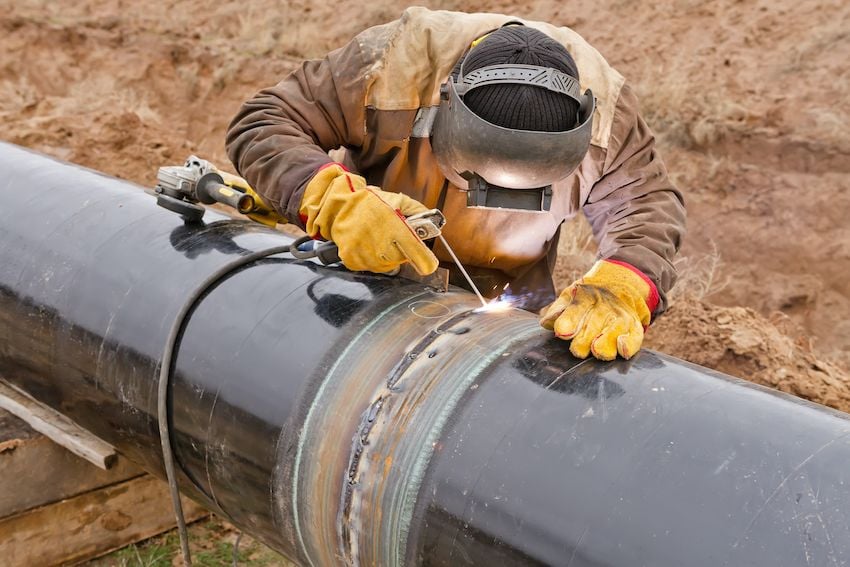According to the Bureau of Labor Statistics (BLS), there were 5,333 fatal work injuries in the U.S. in 2019. This represents a 2 percent increase from 2018 and the largest annual number since 2007.
Proactive safety training such as safety stand downs is one way companies can act to prevent work-related fatalities and injuries. A safety stand down is a special event in which construction, utility, and similar companies talk to their workers about safety. The Occupational Safety and Health Administration (OSHA) holds an annual national safety stand down to prevent falls, but safety stand downs can be about any topic and happen any time of year.
Here are seven steps to help you get the most out of your safety stand downs.
How to hold a safety stand down
1. Decide the safety stand down topic
The first step to holding a successful safety stand down is to decide the particular area of safety you’d like to cover.
Fall prevention is a particularly popular construction safety management topic, and for good reason. Some 880 workers died of a fall in 2019, an increase of 11 percent from the prior year, according to the BLS. About four out of five of these fatal falls happened when workers fell from a higher to a lower level, so it’s common for safety stand downs to spotlight falls from elevation (think: falls from ladders, roofs, scaffolding, etc.). Contact with objects and equipment or exposure to harmful substances or environments are other safety topics to consider.
Although worker safety risk management efforts often focus on physical health, it’s important not to neglect workers’ mental and emotional welfare. Workplace deaths due to suicides and unintentional overdoses due to nonmedical use of drugs or alcohol both increased in 2019, highlighting the importance of safety stand downs focused on mental health. A mental health safety stand down could be particularly beneficial now as COVID-19 cases and deaths continue to rise and increased business and travel restrictions go into effect.
2. Determine who should participate
All workers can benefit from construction and utility company safety stand downs, but it can be worthwhile to target your efforts to a particular group. Take older workers, for example.
You may assume older workers are less susceptible to injury and death because they have more experience. But workers aged 55 and over accounted for 38 percent of all workplace fatalities in 2019, according to the BLS. A safety stand down targeted to this group could discourage complacency and taking shortcuts at the expense of safety.
When determining who should participate in your safety stand down, think beyond the people on your payroll. Also consider including subcontractors, facility owners, architects or designers, engineers, and anyone else working onsite.
3. Review your safety program and materials
Preparing for safety stand downs presents the perfect opportunity to examine your existing construction and utility worker safety program. This will help you to identify any program weaknesses and allow you to design more effective stand downs.
Start by analyzing your program’s effectiveness as it relates to your selected safety topic. Suppose you have chosen fall prevention as your topic. How many fatalities, injuries, and near misses did your company have from falls this year and the year prior? Are workers aware of the company’s fall prevention procedures? Is your program meeting its goals?
Next, review any training materials you have related to fall prevention. Are they up to date, easy to understand, and easily accessible? Are they in the best possible presentation format? Are the materials being used?
Finally, take stock of the safety equipment you’re providing employees. Do all workers have the necessary equipment? Are they using the equipment correctly and consistently? Is it the best equipment available?
4. Develop safety stand down presentations or activities
Safety stand downs can take many forms. Per the Occupational Safety and Health Administration (OSHA), they can be 15-minute toolbox talks or several hours of training. Hands-on exercises such as worksite walkarounds and equipment checks can elicit more participation and increase retention.
No matter your chosen presentation style, it’s important you cover all of the hazards and protective methods related to your safety topic. Assuming again your topic is fall prevention, you would discuss hazards like unprotected edges and openings, improper scaffolding construction, and improper ladder use, as well as protective methods including guardrails, safety nets, and personal fall arrest systems.
Your presentations should also touch on the company’s safety policies, goals, and expectations as they relate to the safety topic. Hypothetical scenarios and quizzes can help test workers’ safety policy knowledge. For example, you could pose this question: If you are working on scaffolding 10 feet above a lower level, what fall prevention precautions should you take?
Also consider incorporating real-life examples of safety excellence at your company. For example, you could hold a round of applause for a worker who intervened when he noticed improper ladder use.
5. Promote the safety stand down
To spread the word about your upcoming safety stand down to workers, hang promotional flyers in high-traffic areas such as building entrances, near time clocks, or in cafeterias. You can also request supervisors notify workers of the stand down during any meetings leading up to the event. If your company uses email to communicate with workers, consider sending a message with event details.
During your promotions, be sure to communicate why you’re holding the stand down. Data points or stories of people personally affected by a workplace injury or fatality can be helpful in this regard. If the safety stand down is mandatory, be sure to explicitly say so. If it’s not, consider offering incentives such as snacks, catered lunch, or a raffle.
6. Hold the safety stand down
Whether your safety stand down is a presentation or hands-on activity, it’s important to keep the energy high. The more enthusiastic and sincere event leaders are, the more receptive participants will be. It’s also important to encourage interaction. Let employees talk about their experience, and embolden them to ask questions.
7. Seek feedback from participants
Immediately following the safety stand down, ask participants for their feedback. You can do this using a printed survey or by conducting interviews with a few select participants. You can also send an email survey in the days following the event.
Take special note of any criticisms. Critical feedback will help you improve future safety stand downs and may also help you improve your safety program overall.
With worker fatalities on the rise, safety risk assessments and training has never been more important. The more you talk to your workers directly about safety, the more it becomes a part of your company’s overall culture.
For more information on this topic, read the blog “3 Ways to Improve Utility Worker Safety.”

